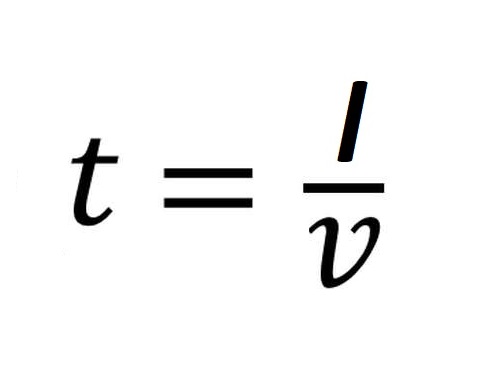Speed is a physical quantity defined as the ratio of the distance traveled to the time taken to cover that distance.
In the SI system (more precisely, its absolute value), speed is measured in meters per second (m/s).
In the CGS system, the unit of speed is centimeters per second (cm/s).
In everyday life, the most practical unit for measuring speed is kilometers per hour (km/h).
To calculate speed, you need to know two quantities: the distance traveled and the time taken to cover that distance. This means that speed is equal to distance divided by time.
For example, if a car traveled 100 km in 2 hours, its speed would be 100 km / 2 hours = 50 km/h.
Speed is calculated using the formula:

Speed = distance (l) / time (t).
To find the distance (l):

Distance (l) = speed × time (t).
To find the time (t):

Time (t) = distance (l) / speed.
It is also important to note that speed can change over time. If the speed changes, then you need to calculate the average speed over a certain time interval. If the speed remains constant, you can determine other motion parameters, such as distance traveled or time, which can be helpful in solving motion problems.
Some notable speed records are:
- The highest speed ever achieved on land by a vehicle is 1230 km/h, demonstrated by Andy Green on October 15, 1997, in the jet-powered car Thrust SSC.
- The fastest passenger airplane is the “Boeing 747-8,” which can reach speeds of up to 1067 km/h. However, the highest speed ever achieved by an airplane belongs to the experimental aircraft North American X-15, which reached a speed of 7274 km/h at an altitude of 107 km in 1967.
- The fastest animal on Earth is the cheetah. A cheetah can reach speeds of 110-120 km/h over short distances (up to 460 meters) and 80-100 km/h over longer distances (about 1 km).